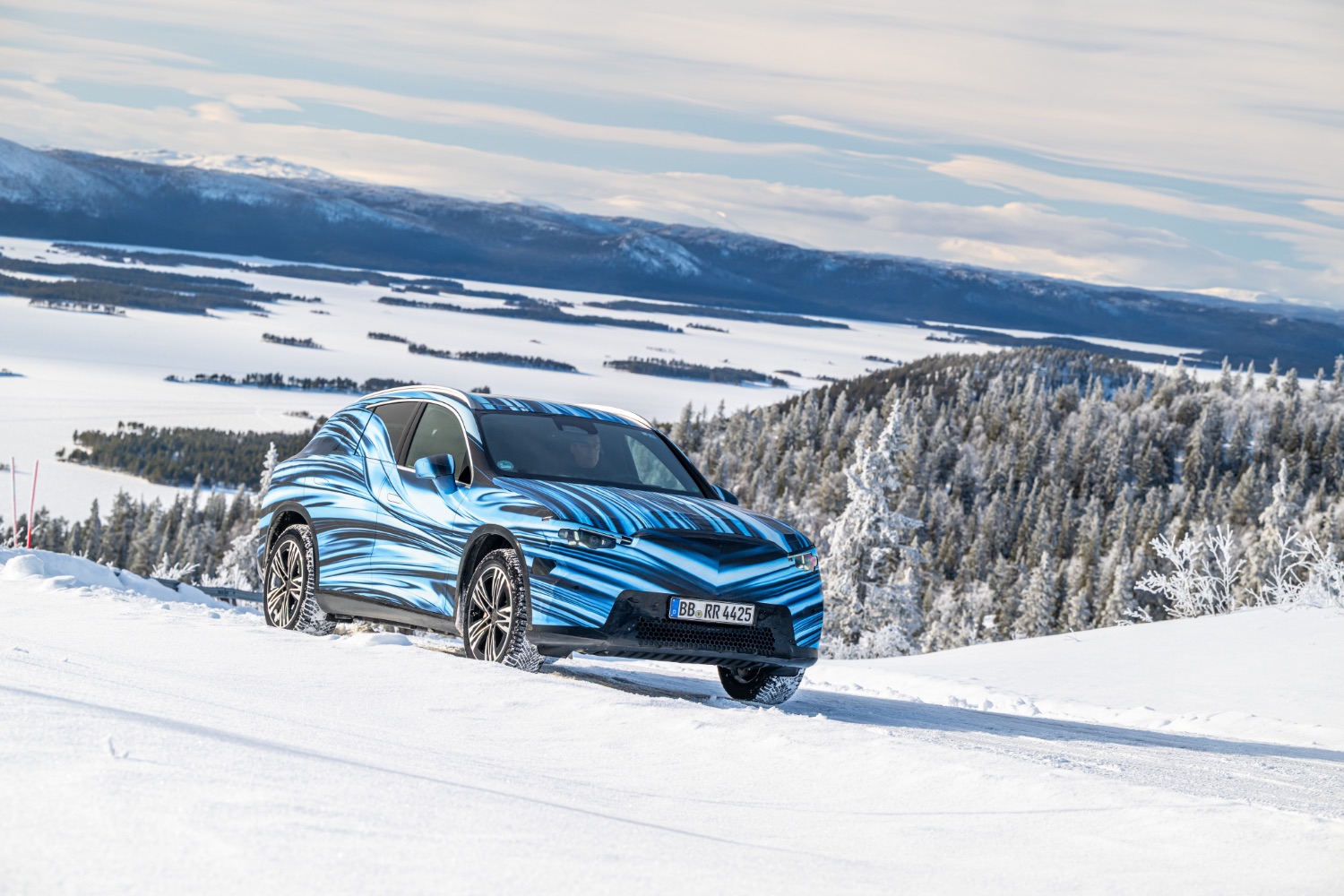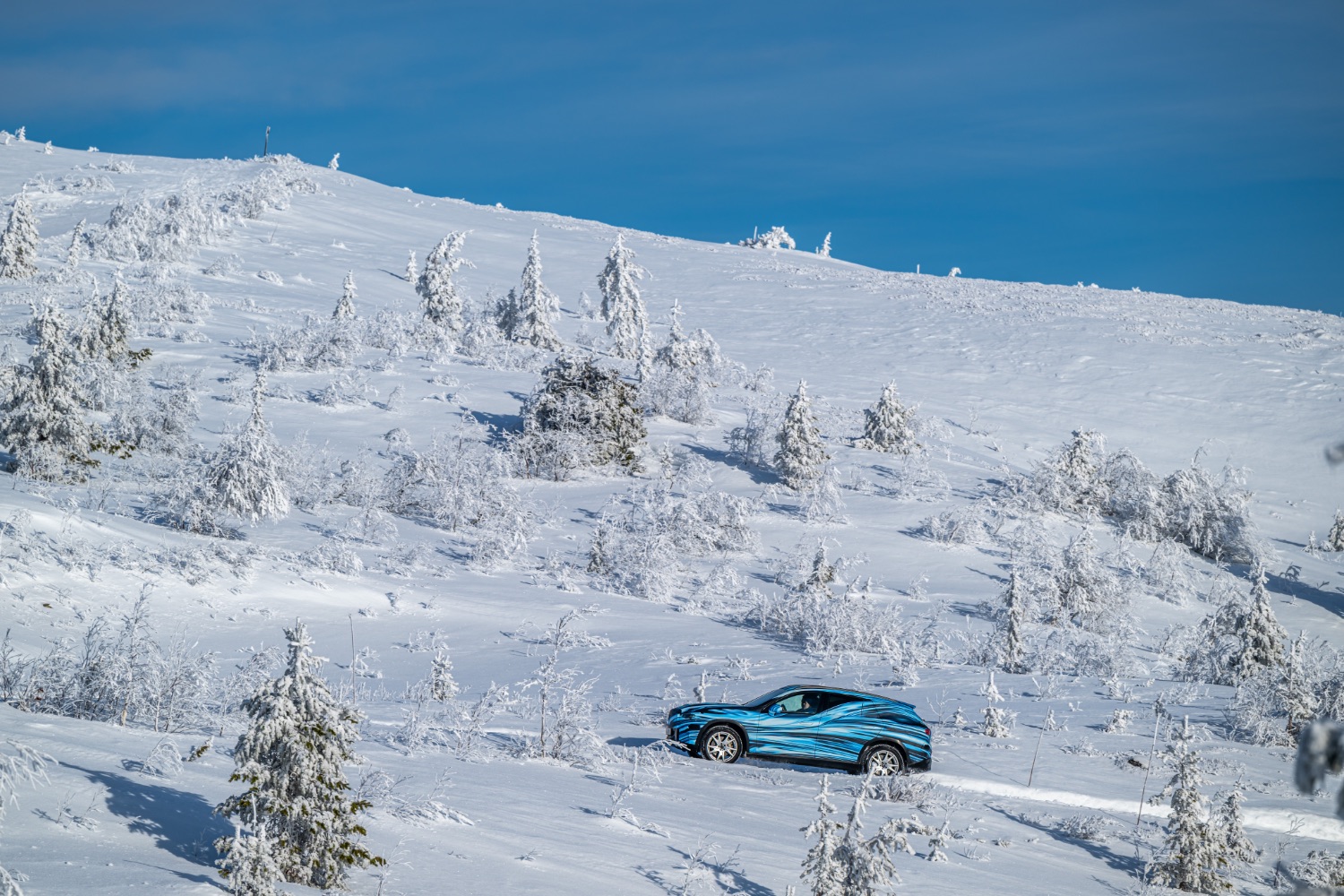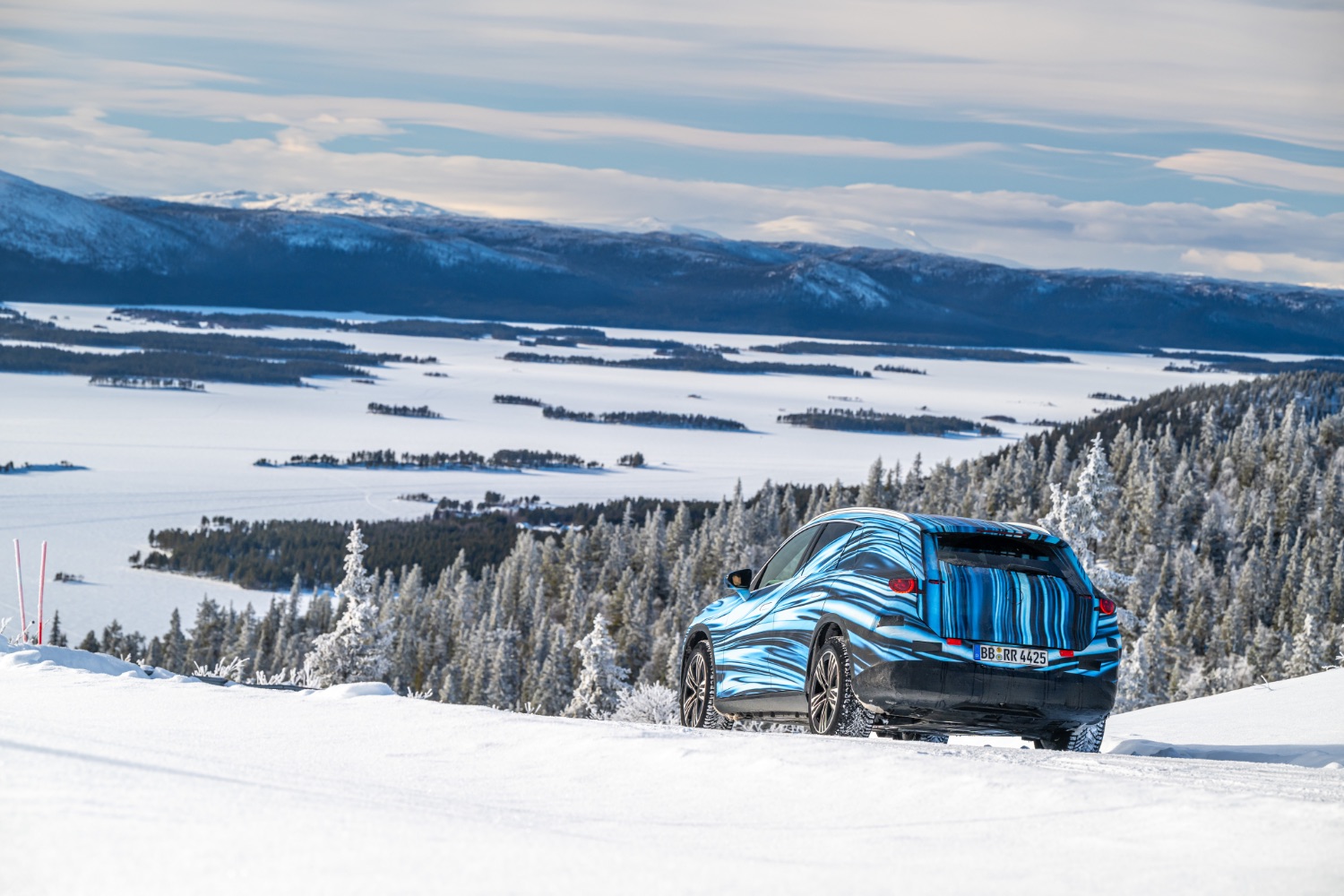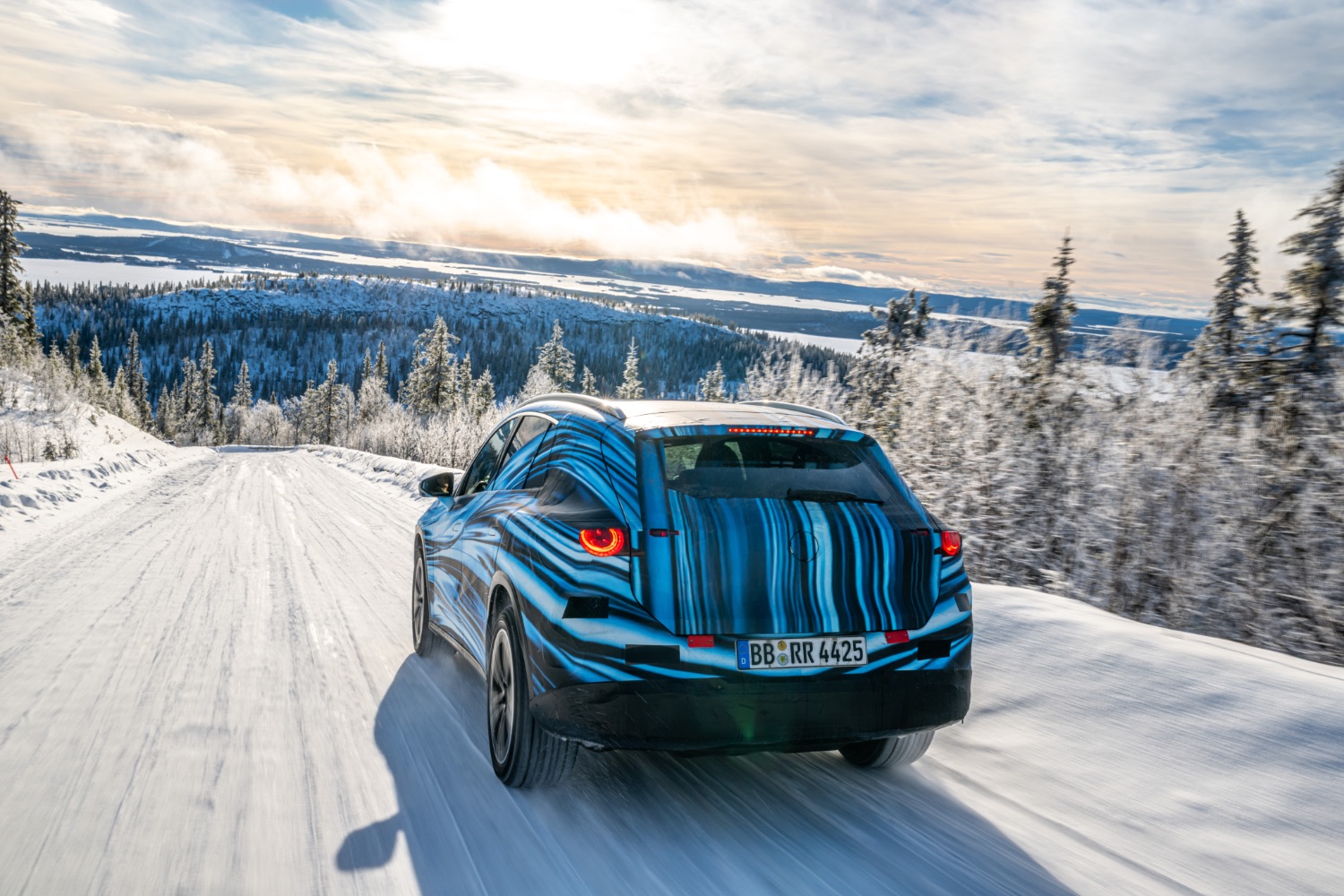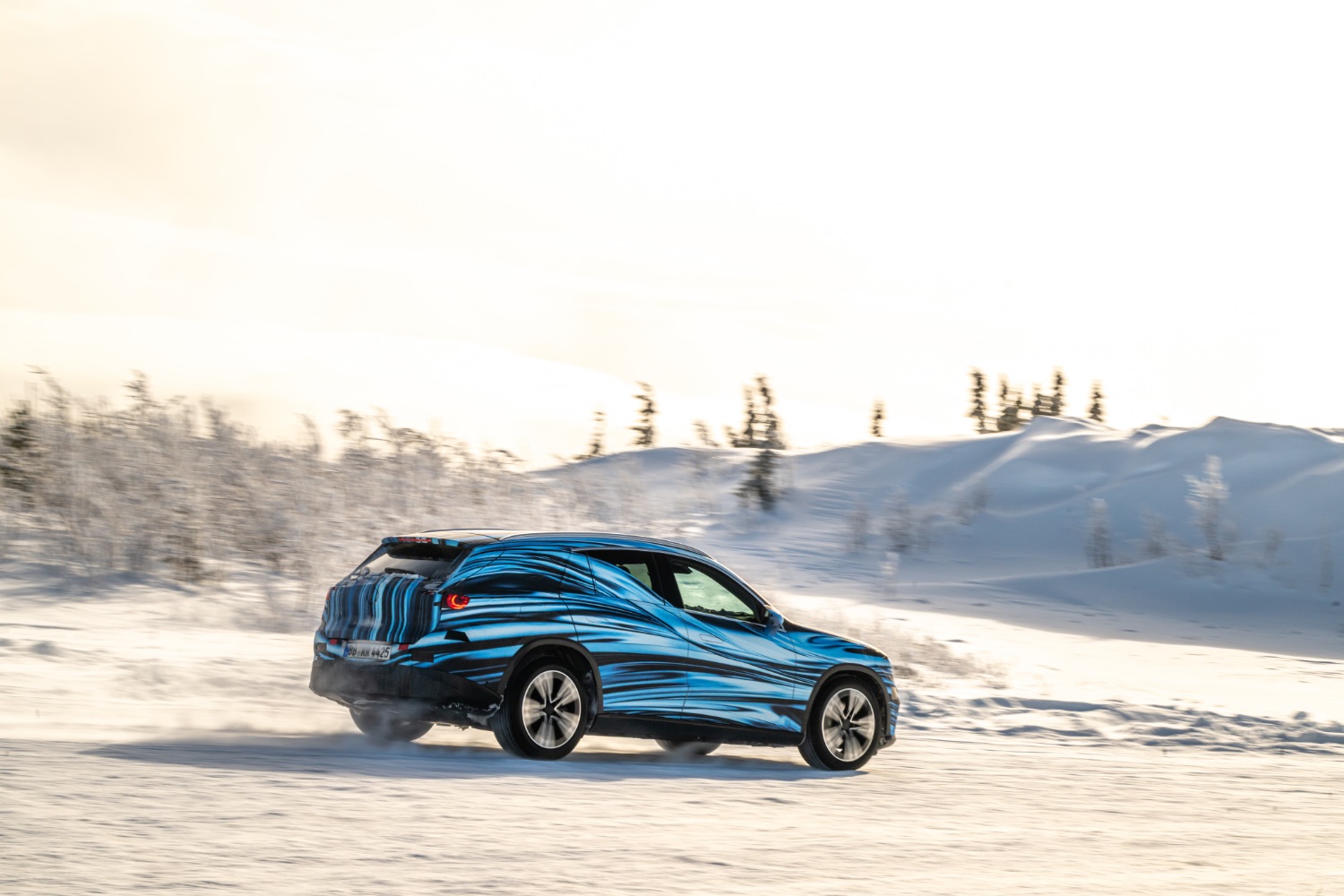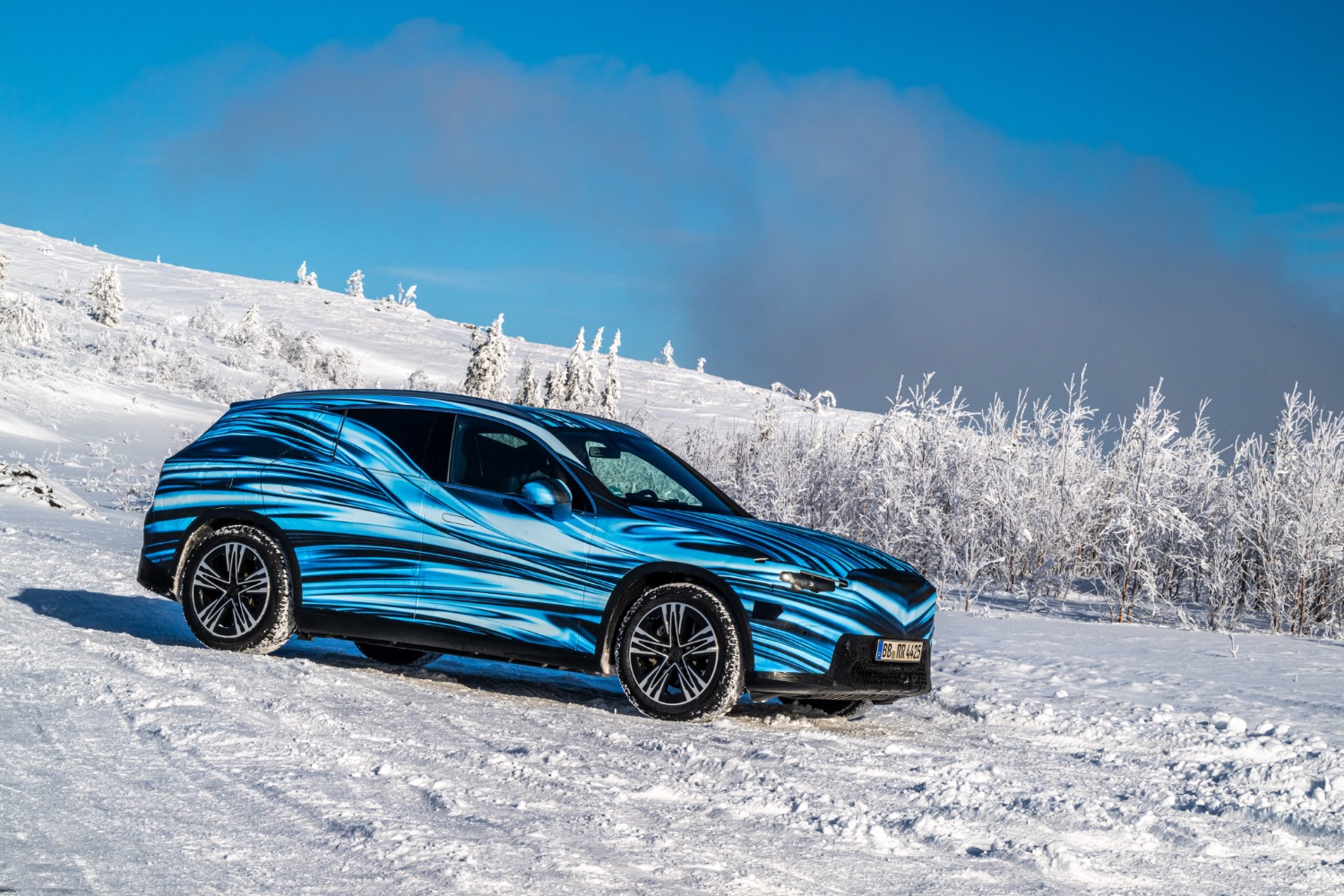This is the new all-electric Mercedes GLC, undergoing its final winter testing and slated as a replacement for the ageing EQC zero-emission SUV the German company currently sells.
So, will this, too, be called an EQC when it goes on sale?
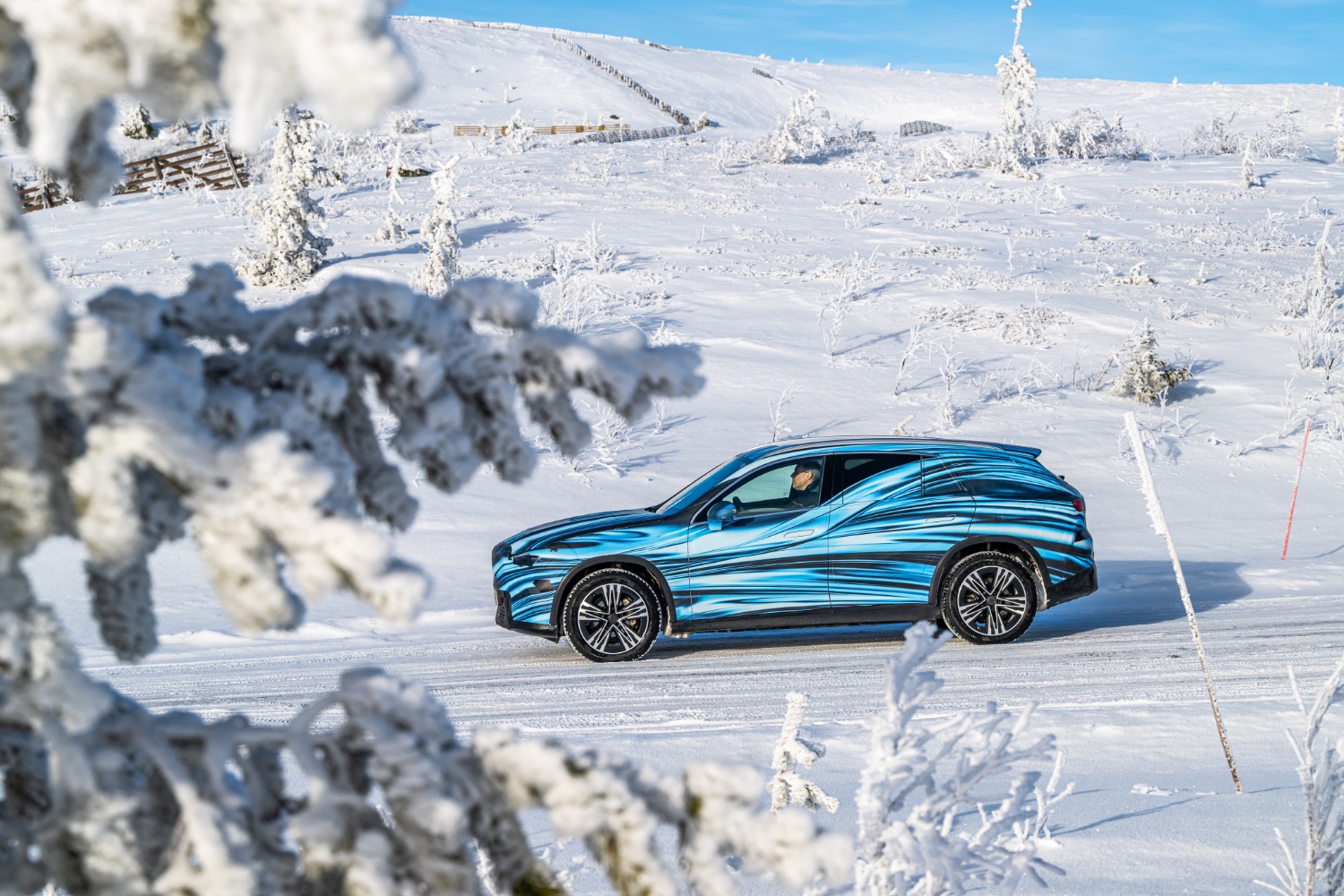
No, it will be a GLC, as Mercedes is rowing back from the EQ sub-brand; a good example of that is the recent G 580 with EQ Technology, which wasn’t called the EQG instead. Anyway, the new electric GLC will form part of a model line with other powertrains in it, Mercedes saying that this ‘caters to all customer needs’.
In relation to its cold-weather testing, one of the final stages of development, Christoph Starzynski, the vice-president of overall vehicle development and integration for Mercedes, said: “Our new electric GLC is a car without compromises - and we test it just as uncompromisingly. During winter testing in Sweden, our new, all-electric GLC demonstrated its reliability and robustness even under extreme conditions. It represents innovation and quality - a fact we have proven in the Scandinavian winter.”
What do we know about this newcomer so far?
It will be going under the name GLC with EQ Technology, but it’s still an SUV at heart, so a big part of Mercedes’ winter testing up at Arjeplog, in Sweden, is testing what its 4Matic all-wheel-drive system will be like. As part of that, the electric GLC has a front-axle drive unit, which can be rapidly engaged or disengaged using a ‘Disconnect Unit’ (DCU) when required.
As with most dual-motor electrics, there’s no physical link between the axles of the GLC with EQ Technology, which means sensors detect spinning wheels and then apportion the torque out according to whichever one has the most traction. Beyond that, Mercedes confirms that the motors use electronics incorporating silicon carbide inverters, while the SUV’s braking system includes a booster, the master cylinder and ESP control in one compact module to provide a precise level of braking feel.
As usual, on an electric, the GLC can decelerate via either full disc friction or motor regeneration phases.
Do we know anything about battery size and range yet?
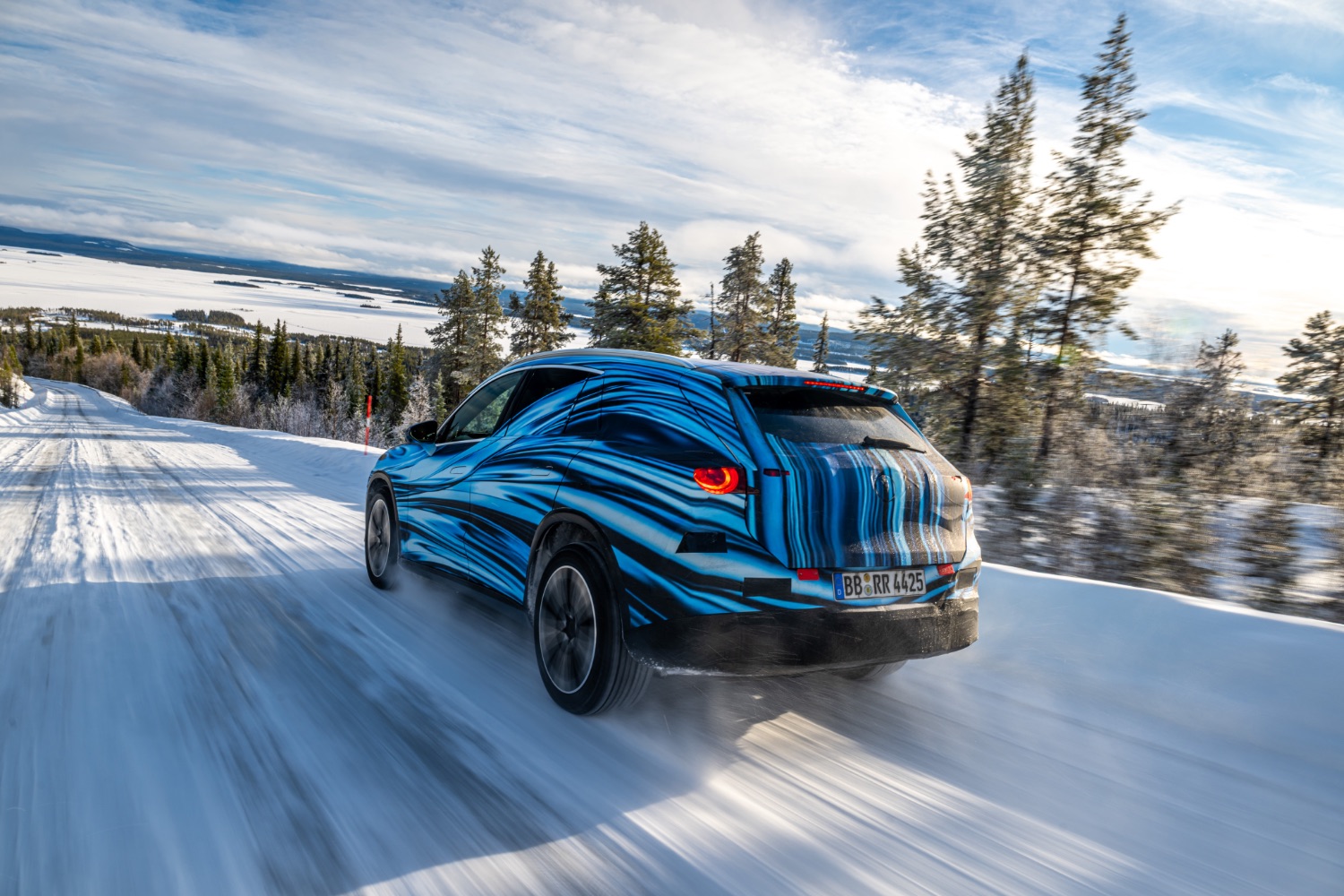
No specifics, but the GLC with EQ Technology will be on the advanced 800-volt architecture, allowing for a DC maximum charging speed of 320kW - that’s ultra-rapid by today’s standards. We also know that the (primary) rear drive motor will have a two-speed transmission associated with it, presumably allowing for a higher top speed in the EV without sacrificing its low-speed acceleration; this is a feature seen on the Porsche Taycan and Audi e-tron GT zero-emission cars, as an example.
Mercedes has also confirmed that the battery itself uses anodes with silicon oxide blended into graphite, which allows for a higher gravimetric energy density. In simpler terms, what this should mean for end users is that the GLC will achieve higher one-shot driving ranges, while its battery pack shouldn’t weigh as much as traditional EV power cells. To help maintain this impressive electrical efficiency even in freezing temperatures, another aspect of the winter testing, the Mercedes SUV will come with a heat pump as standard.
When is the electric GLC due to hit the market?
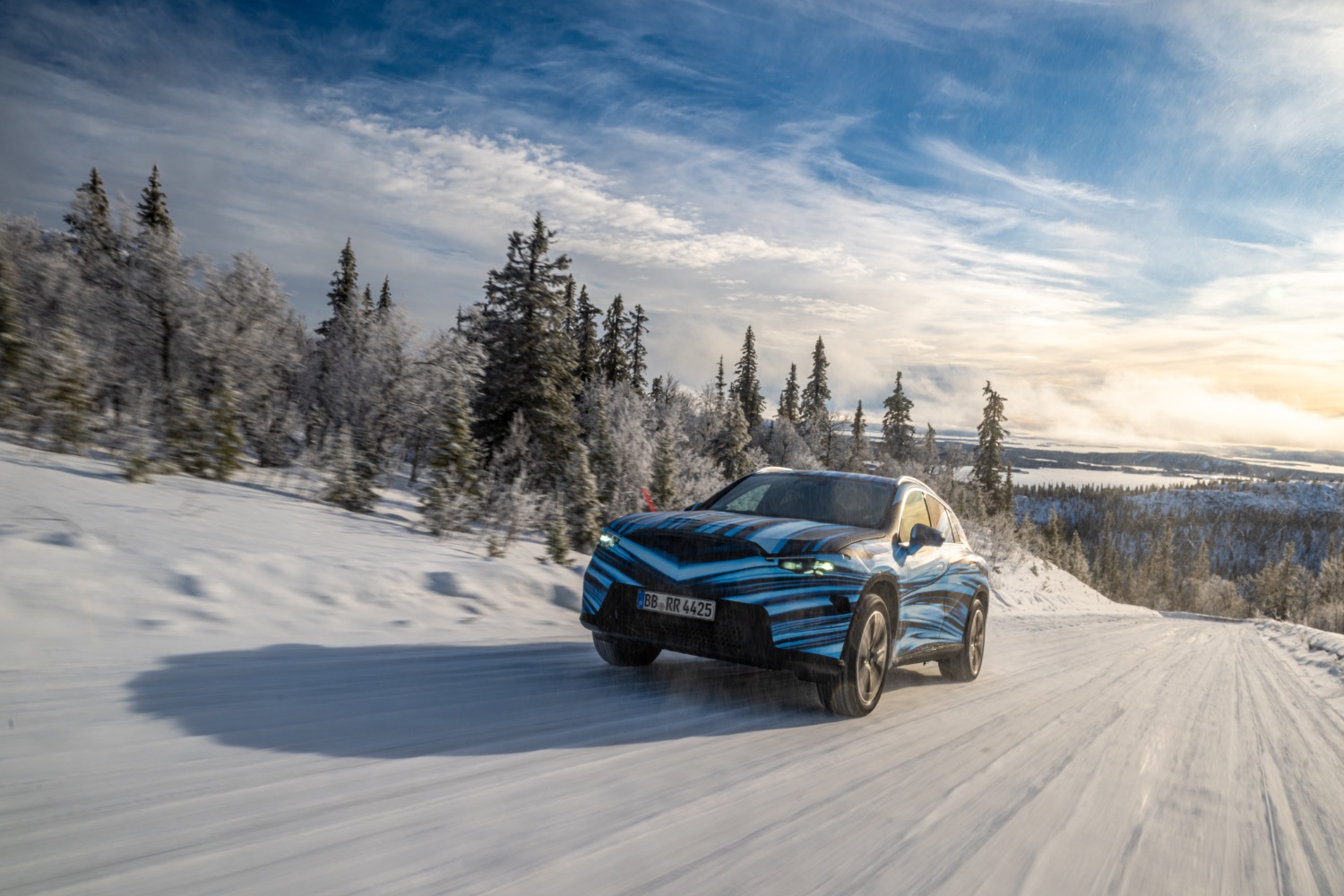
At the moment, this SUV is slated for a 2026 worldwide release, so we’ll bring you more details on the Mercedes GLC with EQ Technology as and when we have them.

